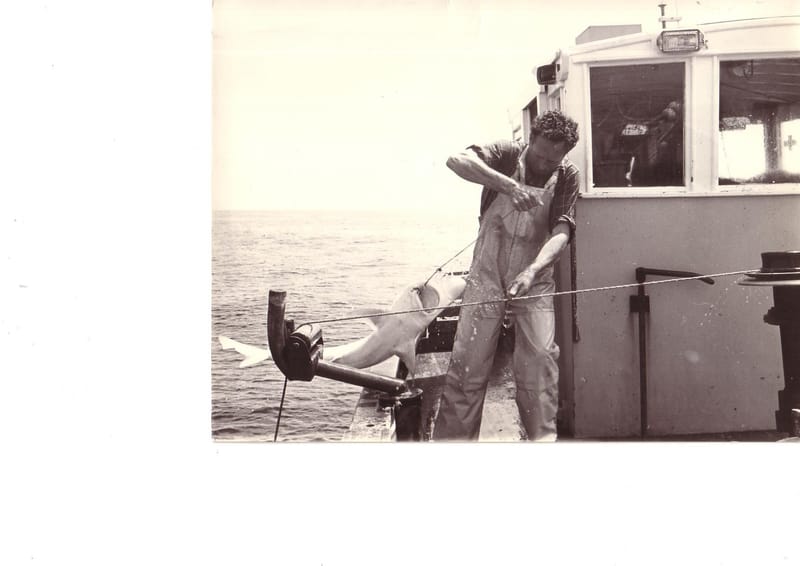San Remo: history
San Remo: History
The land around San Remo was occupied for thousands of years, prior to European colonisation, by the Bunurong people.
In 1798, George Bass sailed into the bay he named Western Port, and with six members of his whale boat made a landing at Griffiths Point.
Bass was followed two years later in 1800 by Lieutenant James Grant in the “Lady Nelson” a vessel specially designed for sea exploration.
Grant returned in 1801 and planted corn and wheat with seeds supplied by his friend John Churchill, .after whom he named Churchill Island.
This was in fact the first European settlement in Victoria.
Early arrivals
A famous early arrival to the area was a spirited 21 year old entrepreneur, John Hart, who established the district’s first commercial venture.
Hart, who was given command of a whaling vessel named “The Elizabeth” brought his whaling team to Griffiths Point to collect wattle bark, a material used in tanning in the summer of 1834.
The wattle bark business he established was soon prospering, and proved to be Griffiths Point’s first commercial venture.
John Hart, born in England, is remembered as one of San Remo’s favourite sons.
A resilient fellow, Hart was self made and became wealthy through shrewd sound business dealings.
(In 1851, Hart went on to enter South Australia politics as an elected member of the Legisative Council. Later, in 1857, he became a member of the first House of assembly and from October 1865 to November 1871 was three times Premier. As head of the South Australian Government he introduced secular education and developed the overland telegraph from Adelaide to Darwin.)
Coal is discovered
By about 1840, a deep water port settlement had been established at Griffiths Point for the exportation of the wattle bark, and also for cattle and farm produce.
Co-inciding with a diminishing demand for wattle bark, came a Welsh miner, Richard Davis, to the region.
A keen geologist, he discovered coal in the Griffiths Point area.
His discovery confirmed an earlier hunch of colonial explorers Hume and Hovell, who believed coal existed in the southern parts of Victoria.
Settlers moved into the area to mine coal, although many were not successful.
This growth period was soon to initiate the arrival of surveyor Robert Mason, in the 1850s; sent by the Colonel Surveyor General Hoddle, with instructions to survey a series of 300 and 600 acre blocks in Griffith Point.
The survey he carried out was one of the earliest recorded conducted in Victoria.
With the arrival of Samuel Anderson and Robert Massie; and Samuel’s brothers Hugh and Thomas who later followed him to Bass, settlement of the area progressed.
When land was released the brothers bought over 2000 acres, centred on the Anderson area with their homestead "Netherwood" being built on the shores of Westernport.
Farming was the Anderson’s main occupation, and the brothers also established salt works.
Settlers flocked to the area with the release of the surveyed land, bringing their families, and they in turn, introduced new and diverse industries into the region.
Industrial boom
The history of coal and Griffiths Point had started in the 1840’s.
Bullock wagons were used to cart the coal mined in the area to Griffiths Point, where it was loaded onto sailing vessels before there was a jetty.
Permission was given by the government for construction of a private rail track from the Kilcunda mine to Griffiths Point using wooden rails and horse drawn trams in November 1871.
Tenders were called for a coal jetty to be built at Griffiths Point in October 1872 which was completed in February 1874.
Steel rails were laid and a steam locomotive was brought from Tasmania in 1883.
The mine couldn’t run at a profit, so the Supreme Court ordered the sale of mineral leases, equipment, jetty, railway and land belonging to the Westernport Coal-mining Company Limited in December 1887.
The rails were pulled up and transported to Queensferry where a line was constructed to a mine at Woolamai.
However it was never used as the company ran out of money.
Coal continued to be mined in smaller quantities with bullock wagons being used again to transport the coal to San Remo.
During the 1860s the timber trade prospered, due to the clearing of land by diligent farmers.
Speculative mining proved in the end to be a non profitable industry.
However, the coal trade managed to keep its head above water.
The industry was sustained by a second survey, conducted by Michael Callanan during the 1870s, which established coal tramways and primitive roads through Griffiths Point.
An attempt to enter the marketplace was made by the Finn family, who arrived in the mid 1870s.
They used their skills of stone masonry to collect pink granite and sandstone from the quarry rocks around Griffiths Point and.Cape Woolamai.
The materials were transported by bullock to the deepwater port at Griffiths Point, from where it was shipped to Melbourne to be used in the construction of buildings.
This stone was to be used for the construction of Parliament House, but the enterprise proved to be too expensive to continue operating, and the business closed down.,
Landmarks
Two landmarks still standing today were also established during the 1870s period.
The Pier Hotel, now known as the Westernport, was built by Phillip Island settler Captain John Cleeland.
And the San Remo Hotel was built by Tom Bergin and named Bergin’s Hotel.
There have been just three owners of the San Remo Hotel since its establishment.
Current owners, the Williams family, have operated the venture from the early 1900s.
The local post office opened in 1873, followed by the establishment of a school in 1874.
In 1875 a stockyard was built to hold stock from Phillip Island. They were swum across the Narrows, on their way to market.
In 1876 the Phillip Island and Woolamai Shire Council was constituted. The newly formed municipality covered Phillip Island and San Remo and extended through to Korumburra, Jeetho, Bena, Whitelaw, Outtrim, Jumbunna and Wonthaggi.
Name change
In 1888, Griffiths Point was renamed San Remo, after the resort town in Italy.
The decision followed a public meeting held in August of that year, at which it was moved that Griffiths Point change its name.
The reason for this name change is obscure.
Many romantic stories abound as to why, but there is no conclusive theory
San Remo continued on the road of industrial expansion during the 1880s and 90s with mining, tree lopping, shipping, salt manufacture and farming the main occupations of its residents.
Shopkeepers were also joining their ranks.
By 1906 both the Anglican and Catholic churches had been built.
A railway is needed
It was at around this time that the need for a railway became clear.
Led by the local council and the shire secretary of the day Harry Bonwick, the population agitated government for the development of a railway line
Its construction was hastened with the discovery of significant coal deposits in the Powlett Fields at nearby Wonthaggi.
The railway, which opened in 1912, added a new dimension and direction to San Remo, and spawned a new industry, fishing.
Prior to the construction of the railway, horse drawn trams had brought coal to San Remo for transportation by boat to Melbourne.
When the horses were replaced with steam locomotives in 1912, other goods, such as boxes of fish from San Remo, could then also be transferred to the main train station service at Anderson.
The fishing industry at San Remo was thus born. (See separate story)
Gradually, as the new century progressed, fishing and farming became the major local industries, oustripping earlier occupations there.
As San Remo developed, tourists started arriving in the picturesque township, with its fishing fleet and busy wharf a major attraction.
It became a popular holiday destination, with boarding houses springing up overnight.
A major transition period for San Remo arrived with the advent of electricity, improved transportation, and construction of a bridge connecting Phillip island to the mainland.
The bridge brought a measure of prosperity to San Remo and a bright future beckoned.
In the 1990s its major industry fishing was increasingly restricted by government, forcing the fleet to contract.
Thanks to the hard work of its community, infrastructure in the town increased attracting retirees and young families to the area.
Today, rugged ocean vistas and safe bay beaches, excellent leisure facilities, a thriving commercial area, and proximity to services, are the hallmark of this thriving town.
.




